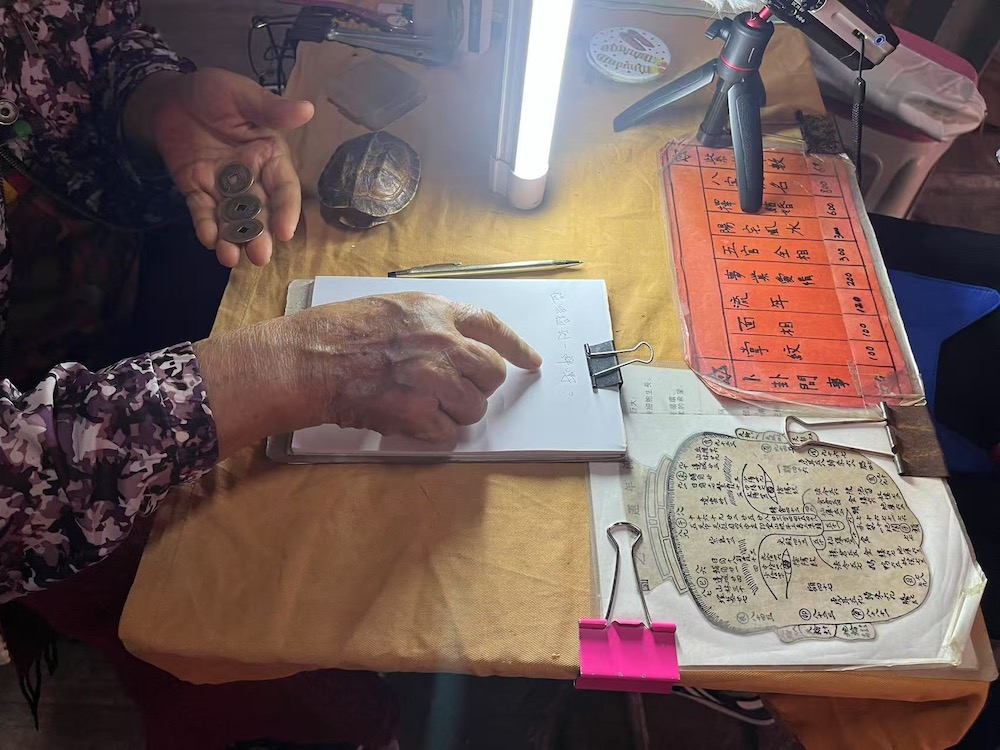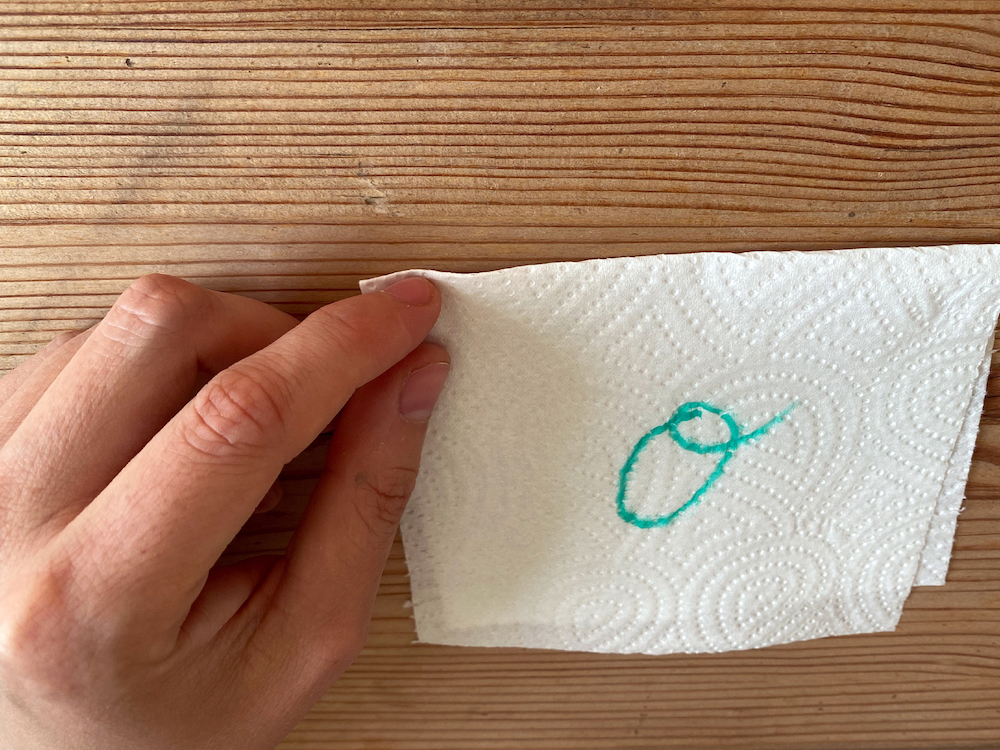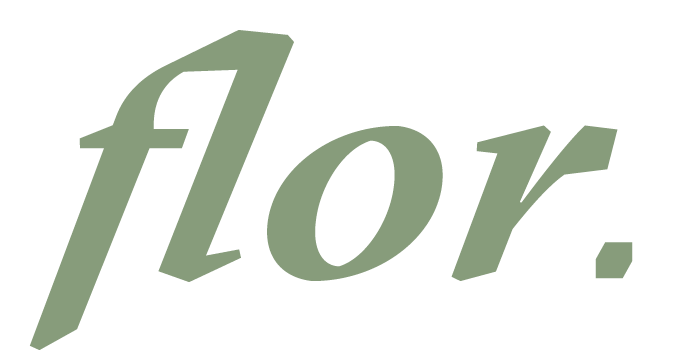27.1.2026, 8pm
Mysterious Signals
A live sound performance by Hui Ye and Ricarda Denzer
echoraum Vienna
My ear is an acoustic universe
sending and receiving
My ear also sounds
Where are the receivers for these tiny, mysterious signals?
Inside? Outside? The cells?
(“The Earthworm Also Sings”, Pauline Oliveros)
As part of long-term research into mantras—arrangements of vocal sounds that transcend the semantic level—artist Hui Ye explores various spiritual and esoteric rituals, encountering practitioners who use the voice as their central tool. In her live sound performance, where she weaves together sound material from her research archive with different voices conveying verbal—or nonverbal—information, she attempts to uncover a hidden mantra that carries a continuous, protective vibration.
O-Research is Ricarda Denzer's approach to ‘O’. Like a ceaseless back and forth, a mysterious object ‘O’, Wilfrid Bion describes access to “O” as resonance, not cognitive appropriation. ‘O’ always remains the same and yet is constantly changing. Para-listening, as the artist calls her listening process, is a practice in which listening – also as a method of auditory research – is ‘[...] an intensification and an occupation, a curiosity or a disturbance’. Listening here means ‘being curious about a possible meaning’; it is unimaginable, chaotic, formless and infinite.


Hui Ye (born in Guangzhou, CN) is an artist and componer based in Vienna.
She works with various media, including experimental documentary film, video and audio installation, and frequently deals with the socio-political aspects of hearing as well as the constantly changing processes of individual social identity and its expression in technology and sound culture. In her most recent projects, the voice—both human and more-than-human—is at the centre of her artistic research, particularly in its digitised forms.
Hui Ye has been awarded the 2018 Kunsthalle Wien Prize, she is co-founder of Mai Ling, a queer-feminist Asian artists' collective. Her work has recently been shown at Kunsthalle Vienna, Secession Vienna, Belvedere 21 Vienna, Jim Thompson Art Centre (TH), Lothringer 13 Halle (DE), WRO Media Art Biennale (PL), Westbund Museum Shanghai and Times Museum Guangzhou (CN).
Ricarda Denzer is an artist, lecturer and artistic researcher working at the intersection of post-media conditions and psychoanalysis. Denzer is co-editor of the publications ganz ohr / all ears – Audio Trouble, Para-Listening, and Sounding Research (De Gruyter); Silence Turned into Objects – W.H. Auden in Kirchstetten (Edition NÖ); Perplexities (Revolver) and the eJournal #13, Un_University of the ZHdK. In addition to her exhibition activities, she has realised numerous (site-specific) art projects. These include her long-term documentation Telephone Paintings (2019- ongoing), Täuschungsmanöver (Deception), on the history of migration in Allentsteig, restore, Site Santa Fe Biennial, New Mexico, USA, About the House, Kirchstetten (Lower Austria) and currently the implementation of the HörWeg (audio trail) for the Reichenau memorial site in Innsbruck.
hui ye
ricarda denzer
soundingresearch
28.4.
Adina Camhy
Sound performance
tba
Live performance
echoraum Vienna
adina camhy
KOMPLIZINNEN I
Alles hat Grenzen NUR DER MONDFISCH NICHT (by Sylvia Eckermann & Gerald Nestler)
Screening
GISCHT / EAERES
Live performance
Künstlerhaus Vienna
KOMPLIZINNEN II
Screening: re-BIRDING (by Michaela Schwentner)
brrds / The Answer Is No
Live performance
Künstlerhaus Vienna
Mysterious Signals
A live sound performance by Hui Ye and Ricarda Denzer
echoraum Vienna
My ear is an acoustic universe
sending and receiving
My ear also sounds
Where are the receivers for these tiny, mysterious signals?
Inside? Outside? The cells?
(“The Earthworm Also Sings”, Pauline Oliveros)
As part of long-term research into mantras—arrangements of vocal sounds that transcend the semantic level—artist Hui Ye explores various spiritual and esoteric rituals, encountering practitioners who use the voice as their central tool. In her live sound performance, where she weaves together sound material from her research archive with different voices conveying verbal—or nonverbal—information, she attempts to uncover a hidden mantra that carries a continuous, protective vibration.
O-Research is Ricarda Denzer's approach to ‘O’. Like a ceaseless back and forth, a mysterious object ‘O’, Wilfrid Bion describes access to “O” as resonance, not cognitive appropriation. ‘O’ always remains the same and yet is constantly changing. Para-listening, as the artist calls her listening process, is a practice in which listening – also as a method of auditory research – is ‘[...] an intensification and an occupation, a curiosity or a disturbance’. Listening here means ‘being curious about a possible meaning’; it is unimaginable, chaotic, formless and infinite.


Hui Ye (born in Guangzhou, CN) is an artist and componer based in Vienna.
She works with various media, including experimental documentary film, video and audio installation, and frequently deals with the socio-political aspects of hearing as well as the constantly changing processes of individual social identity and its expression in technology and sound culture. In her most recent projects, the voice—both human and more-than-human—is at the centre of her artistic research, particularly in its digitised forms.
Hui Ye has been awarded the 2018 Kunsthalle Wien Prize, she is co-founder of Mai Ling, a queer-feminist Asian artists' collective. Her work has recently been shown at Kunsthalle Vienna, Secession Vienna, Belvedere 21 Vienna, Jim Thompson Art Centre (TH), Lothringer 13 Halle (DE), WRO Media Art Biennale (PL), Westbund Museum Shanghai and Times Museum Guangzhou (CN).
Ricarda Denzer is an artist, lecturer and artistic researcher working at the intersection of post-media conditions and psychoanalysis. Denzer is co-editor of the publications ganz ohr / all ears – Audio Trouble, Para-Listening, and Sounding Research (De Gruyter); Silence Turned into Objects – W.H. Auden in Kirchstetten (Edition NÖ); Perplexities (Revolver) and the eJournal #13, Un_University of the ZHdK. In addition to her exhibition activities, she has realised numerous (site-specific) art projects. These include her long-term documentation Telephone Paintings (2019- ongoing), Täuschungsmanöver (Deception), on the history of migration in Allentsteig, restore, Site Santa Fe Biennial, New Mexico, USA, About the House, Kirchstetten (Lower Austria) and currently the implementation of the HörWeg (audio trail) for the Reichenau memorial site in Innsbruck.
hui ye
ricarda denzer
soundingresearch
28.4.
Adina Camhy
Sound performance
tba
Live performance
echoraum Vienna
adina camhy
KOMPLIZINNEN I
Alles hat Grenzen NUR DER MONDFISCH NICHT (by Sylvia Eckermann & Gerald Nestler)
Screening
GISCHT / EAERES
Live performance
Künstlerhaus Vienna
KOMPLIZINNEN II
Screening: re-BIRDING (by Michaela Schwentner)
brrds / The Answer Is No
Live performance
Künstlerhaus Vienna
